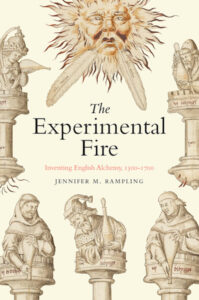 We’ve all no doubt heard of alchemy – the quasi-magical practice from the Europe’s mist-shrouded past through which curiously dressed old European men sought to turn lead into gold. However as with many such practices from Europe’s medieval and early modern period, it wasn’t quite as simple as what the popular understandings of it would have it to be. Sir Issac Newton was involved with it, as were the polymaths Thomas Harriot and John Dee, as well as a number of other persons of historical note. What exactly they did in the practice of it is another matter, as is, if we’re honest, just what it was all about as a whole. Was it the last gasp of a now lost tradition or the beginnings of what would eventually become chemistry? Or was it even a physically-oriented practice at all – being rather perhaps a complex metaphor?
We’ve all no doubt heard of alchemy – the quasi-magical practice from the Europe’s mist-shrouded past through which curiously dressed old European men sought to turn lead into gold. However as with many such practices from Europe’s medieval and early modern period, it wasn’t quite as simple as what the popular understandings of it would have it to be. Sir Issac Newton was involved with it, as were the polymaths Thomas Harriot and John Dee, as well as a number of other persons of historical note. What exactly they did in the practice of it is another matter, as is, if we’re honest, just what it was all about as a whole. Was it the last gasp of a now lost tradition or the beginnings of what would eventually become chemistry? Or was it even a physically-oriented practice at all – being rather perhaps a complex metaphor?
In her recently published The Experimental Fire; Inventing English Alchemy 1300-1700, Dr. Jennifer M. Rampling seeks to untangle the complex knot of threads that lead to and from this perplexing activity. Focusing intently on a number of new sources, Prof. Rampling introduces her readers to the technique of “alchemical reading” as a method of perhaps reaching a better understanding of the activities of the early modern English alchemists. She also explores the influence of patronage by highly-placed persons, including the monarchy itself, in the development and activities of the alchemists.
I’m approximately half-way through The Experimental Fire at present, and I’m finding it both captivating as well as worthy of a truly impressive number of notes jotted down along the way. Whether your interest is in early modern European history, the history of science, or old occult practices, this is a book well worth giving consideration as your next reading selection.
